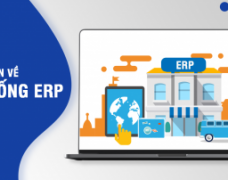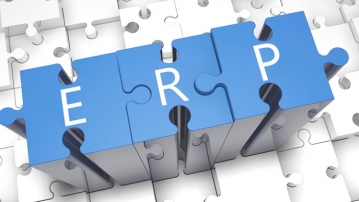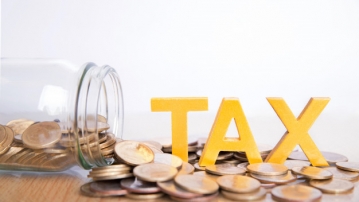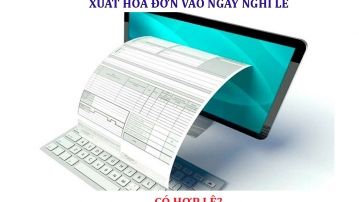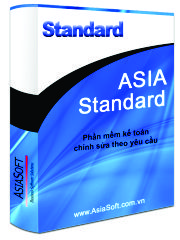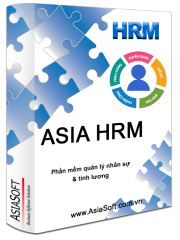 17 May, 2018
17 May, 2018
Some Tax risks and precautions when buying goods and services
Anything that people do not expect, the consequences of which occur in a serious way is considered a risk. When people know the level of risk is high, then action becomes prudent. The problem is, how to be careful to avoid risks is not known to everyone, especially for those who are new to the profession. The article gives a few shares, for those who are interested in the field of accounting. The question is: How does the accountant see the problem of tax risk, when the enterprise (enterprise) buys inputs (referred to as purchases)? If you can answer this question, you will partly know how to prevent risks, in other words, you will know how to be cautious.
Before analyzing the factors that can cause the tax risks of a purchase, we should have a rough picture of the level of risk if the tax authority rejects the purchase cost of the business. If a purchase transaction does not have enough documents, the content of the documents is not suitable, the relevant documents do not match, lacks logic and rigor, and especially uses illegal invoices, the agency Tax has the right to pay the expenses related to the above purchase. At that time, enterprises will be arrears for value-added tax (VAT), corporate income tax (CIT), and fines for late payment of tax calculated from the time the expense is incurred to the date the tax agency detects it at an interest rate of 0 0.03%/day (before July 1, 2016 the interest rate applied to the fine for late tax payment is 0.05%/day). In case, enterprises use illegal invoices, they will be fined from 1 to 3 times compared to the value written on the invoice.
For example, in March 2013, an enterprise buys a lot of raw materials worth 1 billion VND, 10% VAT is deducted is 100 million VND. In May 2017, the tax authority entered the final settlement of this enterprise, discovered that the set of documents of the above shipment was incomplete and lacked logic, the data on the documents did not match, in short, the set of documents contained problem. At the request of the tax authority, the enterprise shall pay the costs of the above documents. As a result, the enterprise is subject to arrears of VAT that the accountant has declared and deducted 100 million VND. At the same time, when paying 1 billion dong of expenses, the profit of 2013 increased to exactly 1 billion dong. Therefore, the 20% CIT arrears is VND 200 million. In addition, the number of days from the VAT declaration period to the date of detection is 1,515 days, the fine for late payment of VAT is: 1,515 days x 0.03% x100 million VND = 45.45 million VND. The number of days from the 2013 CIT payment period to the date of detection by the tax authorities is 1,245 days, the fine for late payment of CIT is: 1,245 days x 0.03% x 200 million VND = 74.7 million VND. Thus, when the tax authority calculates the cost of purchasing raw materials in March 2013, the total amount of tax arrears and fines that enterprises must pay is: 100 + 200 + 45.45 + 74.7 = 420, 15 million VND (in this example, the author does not calculate the late payment penalty interest rate of 0.05%/day applied before July 1, 2016, if calculated so carefully, it will be lengthy and complicated, the number of penalty for late payment will be greater). In the worse case, if the above invoice is an illegal invoice (invoice not registered for issuance or purchased by a runaway enterprise), the fine will be more severe. According to current regulations, the amount of fines that businesses must pay for the act of using illegal invoices will range from 1 to 3 times the value stated on the invoice, that is, enterprises must pay fines from 1 to 3 times the value stated on the invoice. 1 to 3 billion VND. Through the above example, readers have somewhat imagined the level of risk of a purchase transaction. So what do we have to do to protect with the Tax Agency about the expenses that have been incurred are real and not be paid out?
As we all know, the purchase of input elements of the enterprise must be shown on the set of documents. As a general rule, if the purchase of the business is real, the set of documents will obviously be recognized by the Tax Authority and therefore there is no tax risk. This is not necessarily true. Why is that? To answer this question, accountants first need to know: If you want to protect the tax office about a real business purchase, what must the vouchers include? In fact, not everyone knows. There are people who think that: When buying goods, only a VAT invoice with full signature and seal of the seller is required, which is eligible for accounting to be deducted from expenses. This is also not true. Accountants should remember that, the first condition to protect with the tax agency about a domestic purchase transaction is real, there must be a complete set of documents including:
1- Contract, Contract Appendix and Contract Liquidation (if any).
2- Have legal invoices and documents.
3- Have payment vouchers (Receipts if paying in cash is worth less than 20 million VND, if it is more than 20 million VND, it cannot be paid in cash).
4- Minutes of handing over materials and goods (for commercial enterprises), Minutes of acceptance of works (for construction enterprises), Minutes of acceptance of completed service volumes (for service providers). service).
5- Other documents related to the sale and purchase such as: Invoices for transportation costs, loading and unloading costs, installation and commissioning costs (if any), tolls,…
In addition, enterprises can also add additional documents such as: Ex-warehousing slip, warehouse receipt specifying the quantity and type of each item or a detailed list of the quantity and type of each item.
Thus, the simplest question has been answered. Through this question, the author wants to send to the departments and individuals involved in the purchase of inputs for enterprises a message that: “Get as many documents as possible from the seller”.
The second question is: If a purchase transaction has all relevant documents, can the accountant protect the tax agency about the deductible expense of that purchase? The answer is also “not sure”. Why is that? To answer this question, we need to carefully consider the appropriateness, logic and rigor of each document in the above-mentioned set of documents.
Economic contracts
Purchase transactions with great value and long implementation time, it is necessary to have an economic contract, to provide binding commitments between the buyer and the seller. The contract is also a basis, to affirm the value and importance of a transaction. If an invoice is of great value without an accompanying Contract, this is a sign for the tax authority to question the reality of the transaction. Contracts and other documents are closely related to each other in terms of content.
– Firstly, in terms of value: The value stated in the Contract must be equal to the value stated on the Invoice and Payment Documents. If the data on these three documents (Contract, Invoice, Payment voucher) are not equal, the accountant needs to explain. Besides the case where the Contract value is equal to the value stated on the Invoice, there are two possibilities:
+ Possibility 1: The value on the Contract is greater than the value on the Invoice. In this case, if there is no Appendix to adjust the actual value, the tax authority will handle the seller by treating the contract value as revenue. Thus, the seller’s revenue will be increased compared to the revenue declared according to the Invoice. In this case, the seller is at risk, the buyer is not at risk.
+ Possibility 2: The value stated on the Contract is smaller than the value stated on the Invoice. In fact, this case is not uncommon. The reason is, after signing the Contract, the Buyer may have additional purchases or even ask the seller to send a price, so the value stated on the Invoice may be much larger than the actual value stated above. Contract. In this case, the buyer has accounted for the cost according to the value stated on the Invoice. If the enterprise does not make an additional adjustment appendix or cancel the old contract, re-sign the new contract so that the value matches with the invoice, the tax authority will determine the number stated in the old contract. is the cost. Thus, in this case, the buyer’s costs will be reduced and the buyer’s profit in the period will increase exactly by the difference between the value stated on the invoice and the value stated in the old contract. In this case, the Buyer will be subject to arrears of CIT and a fine for late payment corresponding to the additional profit.
– Second, in terms of payment: The payment terms stated in the Contract will have provisions on the payment term. The tax authority will compare the time on the payment voucher and the payment term stated in the contract to catch errors. There are 2 possibilities:
+ Option 1: The enterprise pays before or on time compared to the payment term stated in the contract. In this case, there is no risk.
+ Option 2: The time of payment on the Payment Documents arises after the payment deadline stated in the Contract or the Handover Minute. In this case, the tax authority will ask the enterprise to adjust the input VAT withholding declaration period. If the enterprise applies for a VAT refund, the tax authority will not grant a VAT refund, for cases where the enterprise does not pay on time specified in the contract. Whether it is necessary to adjust the VAT deduction period, or not be refunded VAT, it causes problems for businesses that cannot be overcome. Therefore, to avoid such risks, enterprises need to monitor the payment terms stated in the Contract. If the enterprise is still unable to pay the seller by the due date, an application for extension of payment must be made and must be accepted by the seller. Only then, the new tax authority will accept the business for tax refund or withholding declaration in the right period when it arises. To illustrate the case where a business is forced by the tax authority to adjust the withholding VAT declaration period, let’s consider the following example.
For example: In March 2015, DN A signed a contract to buy a shipment of DN B with a value of 1 billion VND, 10% VAT is 100 million VND and was invoiced by DN B in that month. DN A has declared the deductible VAT of that Invoice for Quarter 1/2015. Suppose, in Quarter 1/2015, the total output VAT of enterprise A is 90 million VND, which is smaller than the total deductible VAT of a bill of material purchase of 100 million VND (this quarter only 1 Purchase VAT invoice). Therefore, in Q1/2015, DN A does not have to pay VAT. However, in the Contract, it is stated that the payment term is after 90 days from the date of signing by the two parties, that is, the payment deadline is June 30, 2015. Due to the payment due date, DN A has not yet paid DN B and has not applied for an extension. In October 2015, DN A only transferred the payment to DN B. In 2017, the tax authorities entered the final settlement with DN A, they reviewed the payment terms stated in the Contract and asked DN A to adjust the declaration period. withheld VAT of the bill of purchase of materials in the first quarter to the fourth quarter of 2015. Thus, the first quarter of 2015 will not be deducted 100 million of tax but must declare withholding for the fourth quarter of 2015. Therefore, the payable VAT amount of Quarter 1/2015 must be 90 million VND. Enterprise A has arrears of 90 million VND of VAT and the late payment interest of 90 million VND at the interest rate of 0.05% per day (from July 1, 2016 a fine of 0.03% of late payment tax will be applied). days) until the time of finalization by the tax authority. As for the fourth quarter of 2015, how DN A will adjust, the author does not mention it anymore, because if it is presented, this issue will be very lengthy and complicated. Thereby, we can see that the fact that the enterprise is required by the tax authority to adjust the input VAT declaration period also causes complicated procedures and certain risks.
VAT invoice
One of the very important conditions, in order to be accepted by the tax authority for the enterprise to deduct VAT and be included in the deductible expenses, is: The invoice must be legal. If the buyer gets an illegal Invoice, the penalty will be very serious. In fact, not all accountants are careful and know how to check the legitimacy of VAT invoices. Many people think that a VAT invoice with full seal and signature of the seller is a legal invoice, this is not necessarily true. To confirm the initial legitimacy of the Invoice, the accountant needs to check the information on the name, address, tax code of the seller, check the serial number of the Invoice to see if they have registered to issue. ? Checking this information is done by typing the company name and tax code on the Taxpayer Information page of the General Department of Taxation. Then open the Invoice Information page, then type the serial number of the Invoice that the seller intends to issue, see if the seller has registered to issue with the Tax Authority or not. If the information is good, it is not safe to confirm that the Invoice is legal. So what is the next step for accountants to do?
In the second step, the accountant needs to ask the seller of the copies of Lien 1 and Contact 3 to see if they match the Invoice (Lien 2) that the enterprise brought back? If you are more careful, you must directly see the seller write the Invoice and must directly sign the buyer’s position for all 3 copies. In fact, many businesses take advantage of the tax declaration policy of self-declaration and self-payment. Therefore, the phenomenon of 3 copies with different values is possible, especially in the current situation of buying and selling invoices. This is a seller fraud phenomenon. Such suppliers, even if they are still operating today and their invoices are registered, but one day they run away, no one knows in advance. If the buyer gets the seller’s invoice like that, he will certainly face a risk, even if the sale is real. So is there any way, to prevent the possibility of the seller running away, while the enterprise still protects the deductible expenses with the tax authority?
The third step, the accountant asks the seller to print the tax return of the past few periods to see if they have input on the items they sell to the business? To avoid the situation that they only have output without input, that is also a sign of illegal business. On the other hand, the buyer must ask the seller to print the tax declaration of the purchase period, whether the seller declares the output VAT equal to the buyer’s input VAT? If the seller also declares the output VAT equal to the buyer’s input VAT, the accountant will keep that declaration in the file and be completely assured of the legitimacy of the invoice. However, according to the current new regulations, when declaring VAT, enterprises only need to declare on the declaration sheet, omitting the appendices on the list of purchase and sale invoices. Therefore, these appendices are self-made in Excell. At that time, the buyer can ask for a photocopy of the seller’s business registration certificate or an input invoice of the seller, to have a basis for affirming that the seller has a business in the goods he bought and rest assured because they are not illegal business enterprises.
Thus, if the buyer carefully checks the seller’s information according to the above steps, even if one day in the future, the seller runs away, the buyer still protects the legality of the goods. single.
In addition to the legitimacy of the Invoice, the accountant must also pay attention to a number of contents written on the Invoice such as: Name of goods, quantity, unit price, …
– For commercial enterprises, the name of purchased goods must match the name of sold goods. That is, businesses want to be deducted and plan expenses to be deducted, they must ensure the principle of “Buy what, sell it”. Therefore, the name of the imported goods must be consistent with the name of the goods exported or sold. If there is a case, buying by “set” but retailing by “piece”, enterprises need to have a document explaining the specifications and how to convert from “set” to “piece”…
– For manufacturing enterprises or construction enterprises, the name of purchased materials must be consistent with the type of materials used for production, suitable for the use of materials or the construction cost estimate. For example, an enterprise has a car according to the technical records of fixed assets, which is a diesel vehicle. However, businesses take gasoline bills to include in expenses, then gasoline bills will be eliminated, …
– In terms of quantity, commercial enterprises must ensure the principle of “Buy 1 – Sell 1”. If that principle is not guaranteed, the accountant must explain why buying a lot but selling little? Where is the inventory? Is there liquidation of damaged goods or the process of canceling goods that are overdue,…?
– For manufacturing enterprises, input factors must match production norms or work estimates. It is not allowed to take the invoice of this material to compensate for other materials,…
– Regarding the value recorded on invoices, accountants need to note that ordinary invoices need to be recorded at market prices, not baseless prices. This phenomenon is very common in enterprises today, as a result, the tax authorities will remove the purchase invoices with prices too high compared to the market.
Payment vouchers
Payment vouchers are also a very important condition, for the tax authorities to allow businesses to deduct tax and account for expenses. According to current regulations, if the transaction value is greater than 20 million VND, payment must be made via banks, including direct invoices (before August 2, 2014 direct invoices do not have to be transferred). Payment vouchers are eligible, must ensure the form of payment and payment content.
– First, about the form of payment
+ For transactions of small value (under VND 20 million) that the buyer pays in cash, the payment voucher is the Receipt. The request of the receipt must be fully signed, even the seller’s seal. It should be noted that, in addition to the Invoice, the accountant must ask the buyer to get the Seller’s Receipt. In case, buying many types of items that are not specifically listed on the Invoice, the seller must also ask the seller to provide an additional Ex-Delivery Note/List clearly stating the name and quantity of each item.
+ For transactions with a value of 20 million VND or more, payment must be made via bank or clearing / clearing of debts. So how to pay, to be considered as payment via bank? Accountants need to note that: There are cases where payment via bank is not accepted by the Tax Authority. For example, the buyer brings money to the bank to pay directly to the seller’s account, or the buyer transfers money from his own account to the seller’s account, but this account is not registered with the Tax Authority. If the payment is made via bank in the above two cases, the cost of that transaction will not be allowed to be deducted by the Tax Authority and will not be accounted into the deductible expense. Many businesses do not pay attention to this and as a result, when finalizing taxes, they will be paid by the tax authorities, businesses will be arrears in VAT, CIT and fines for late payment of tax calculated at the interest rate of 0.03%/day. Thus, accountants need to be very careful about payment, otherwise the risk will be very serious. So, to prevent the above situations, the buyer needs to ask the seller to provide Form 08-MST, to know some information of the seller, especially the account number that the seller has posted. signed with the tax authority.
In short, payment via bank must ensure that the buyer transfers funds from his account to the seller’s account, both buyer and seller accounts must be registered with the Tax Authority on Form 08-MST.
– Second, about payment content. When transferring money, accountants need to specify which specific Contract or Invoice will be paid. Avoid the situation that businesses buy many times from the seller, the acquisition times have different payment terms. Therefore, in order to ensure on-time payment, not to be confused between purchases and to ensure the explanation to the Tax Authority about the on-time payment, the payment order must clearly state the payment for the Contract. particular coin. If any payment is delayed from the time stated in the Contract, an Application for Extension must be made and approved by the Seller. Accountants can do this to avoid the risk of tax authorities asking enterprises to change the VAT deduction declaration period as mentioned above.
In addition, the payment value also needs special attention. If the payment value does not match the value stated on the Invoice, the Tax Authority also has a reason to be detrimental to the enterprise. Especially, in case the value on the payment voucher is less than the value stated on the Invoice, if this happens, the tax authority will determine the cost according to the number stated on the payment document. At that time, the profit in the period of the enterprise will be increased, which leads to the enterprise’s CIT arrears and a fine for late tax payment. To avoid the above risk, accountants need to make an Application for payment extension or a debt reconciliation record (if at the end of the year)…
In short, in order for the tax authority to accept the enterprise to declare VAT deduction, refund VAT and be accounted for deductible expenses, one of the conditions that enterprises must comply with is that the payment documents must ensure according to regulations. The accountant needs to get the Seller’s Form 08-MST, to transfer the money to the correct account number that the seller registered with the Tax Authority. At the same time, must read and monitor the performance of the Contract in order to promptly adjust and supplement relevant documents and make payments on time.
Minutes of delivery of goods / Minutes of acceptance of completed work volumes.
In fact, many accountants now recognize revenue and expenses based on the time and value recorded on the Invoice. Accountants need to keep in mind that, in some cases, the taxable revenue may coincide with the taxable revenue. However, in some other cases, the turnover for calculating VAT is different from the revenue for calculating CIT. Discussing this issue will involve both the buyer and the seller. When the time of the invoice does not coincide with the transfer of ownership of the goods, there are many possibilities and controversial issues. No matter what, when inspecting and finalizing taxes, the tax authorities always handle it based on the point of view: “If it is beneficial to the State Budget, then keep quiet. On the contrary, if it is unfavorable to the state budget, enterprises must be dealt with”. Therefore, if you do not know this well, it is likely that the accountant will be detrimental to the enterprise or the tax authority will handle the enterprise. To illustrate this problem, let’s study some of the following situations.
Scenario 1: The time to issue the Invoice occurs before the time when the two parties make the Minutes of handing over the ownership of the goods. The reason is so, because the enterprise buying goods transfers money in advance to the seller, to ask them to issue an invoice corresponding to the advance amount. In this case, the two parties have not transferred the ownership of the goods. Therefore, the time stated on the handover/acceptance record of the work occurs later than the time stated on the Invoice. In this situation, what are the tax obligations of the buyer and the seller?
– Buyer: The accountant declares the withheld VAT and records it in deductible expenses, according to the time recorded on the invoice. If the time of transfer of ownership of goods belongs to the following year (belonging to the following year), the tax authority will determine that expense belongs to the following year. Thus, the cost of the buyer will be lifted from the previous year to the next year and therefore, the profit of the previous year will increase by exactly the amount of the cost lifted to the next year. As a result, enterprises will be subject to arrears of CIT, withheld VAT and fines for late tax payment. This situation may be due to the objective of the seller or may be due to the subjective of the buyer.
+ Objectively: The time of purchase/advance is close to the end of the year, or for some reason the seller cannot provide the goods in time and has to delay to next year. It is very difficult for the accountants to prove to the tax authorities about the objectivity. Tax authorities are always suspicious of the Buyer’s initiative to get the Invoice before the year of the Buyer in this case.
+ Subjective: The buyer actively takes the invoice to be deducted and accounts for the cost in advance in order to reduce the profit of the current year and thus reduce the tax liability. This is a very common behavior in businesses.
Whether it is objective or subjective, the buyer’s deduction of VAT and accounting for expenses for the previous year (according to the time indicated on the invoice) is a violation of the matching principle (because this expense has not yet generated revenue for the company). accounting year). Therefore, the tax authority has the right to force enterprises to move the period of declaration of withholding VAT and deductible expenses to the following year. This is a risk.
So to prevent this risk, the buyer can agree with the seller to adjust the date of signing the Minutes of Goods Handover to match the tax declaration period, although the signing date is still the date on which the two parties transfer ownership. .
– Seller: In case the seller receives the advance and issues the invoice in advance, he will be forced to declare output VAT, no matter what (subjective or objective as mentioned above), the Seller cannot delay the declaration period. output VAT report. That is the principle in favor of the state budget. Thus, in the same transaction, the tax authority can force the buyer to move the withholding tax declaration to the next period, but force the seller to declare output VAT right in the invoice period. The problem is how does the seller declare the Revenue subject to CIT? There are two possibilities.
+ Possibility 1: Accountants recognize income subject to CIT right at the invoice period (year). Many inexperienced accountants believe that, when issuing invoices, they must record VAT declaration revenue and at the same time, revenue subject to CIT. If the accountants think like that and always record it in Account 511, it will be detrimental to enterprises in terms of CIT payable early. The more profitable way to do it must be according to the ability 2.
+ Possibility 2: The accountant recognizes the advance as unrealized revenue (Account 3387) or credits Cr 131. According to this method of recognition, the advance received has not yet been recognized as income subject to CIT right in the period. Invoice period. And so, when the two parties sign the Minutes of Handover of Goods / Minutes of Acceptance of the Works, the unrealized revenue of Account 3387 will be transferred to Account 511, and then the advance will be recorded as income subject to CIT. In this way, it will be financially beneficial for businesses because a part of CIT is postponed to next year.
Scenario 2: The time to issue the Invoice occurs after the time when the two parties make the Minutes of handing over the ownership of goods / Minutes of acceptance of the works. In fact, this situation is very common for businesses that buy on credit or businesses operating in the field of construction. Why is that? The reason is because, the two parties have signed the Minutes of handing over the goods or the Minutes of acceptance of the works. However, because the buyer has not fully paid the seller or for some reason the two parties have not agreed on the final number, the seller has not issued an invoice to the buyer.
In this situation, what will be the tax liability for the parties?
– Buyer: Because it is a credit purchase, although the two parties have signed the Goods Handover Minute, the seller has not yet issued an invoice. This can cause sell-before, buy-later and thus violates a very basic principle of “Sell First, Buy Later”. Such expense invoices will be paid by the Tax Authority. To avoid such risks, accountants need to note: When purchasing goods, it is necessary to get Invoice for the right time. In case of purchase on credit but the seller does not issue an invoice, the buyer must advance VAT to the seller, so that they can write an invoice for the correct period. For enterprises that manufacture or operate in the field of construction, it is necessary to obtain an input invoice in accordance with the production time or the construction time. For commercial enterprises, it must be ensured that the time of purchase occurs before the time of sale.
– Seller: In principle, when the seller hands over the ownership rights to the buyer, whether paid or unpaid, whether invoiced or not, the tax authority still determines the time when the two parties sign the receipt. The transfer of ownership is the time when revenue is subject to VAT and CIT. Therefore, if the accountant recognizes revenue based on the time of invoice issuance belonging to the following year, the tax authority will lift the revenue from the following year to the previous year. As a result, the previous year’s profit will increase and the business will be subject to arrears of CIT and VAT. To prevent this risk, at the time the two parties sign the Goods Handover Minute or the Work Acceptance Minute, the accountant must write an invoice, record revenue and declare tax. If the buyer has not received the Invoice, the accountant will not tear it from the stub. In the next period, when the buyer has paid off the debt or the two parties close the final number, the accountant will issue another invoice and declare the adjustment to reduce the declared tax amount of the invoice that has not been torn off the stub. .
In addition, accountants also need to pay attention to the value recorded in the Minutes of handing over of goods or Minutes of acceptance of the work volume. If the value and volume stated in the Goods Handover Minutes, the Work Volume Acceptance Test Minutes are larger than the value and volume stated in the Economic Contract, VAT Invoice, and Payment Documents, the tax authority will determine the revenue as the value recorded in the Minutes of handing over the goods or the Minutes of acceptance of the work volume.
In summary, in the above-mentioned documents, if there is a difference in value that cannot be explained by the accountants, the tax authority will choose the largest number to impose revenue for the Seller and its customers. the smallest amount to impose costs on the Buyer.
Above, are a few sharing about the tax risks that may be encountered when businesses buy goods. For purchases of small value, quick payment and delivery, there is no Contract. However, in those cases, accountants need to pay attention to the parts and individuals buying goods that need to get the most (possibly) of the seller’s documents. In this article, because of trying to avoid rambling, the author cannot give all specific examples to illustrate each case. The author looks forward to reading, especially accounting students, who are new to the profession, to research and reflect to apply for their work smoothly.
by: accounting and auditing journals


